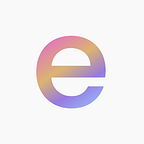Month 8 of UX Interning Remotely
Accessibility and inclusivity
This month I have learnt so much when it comes to the topic of accessibility. I completed and passed an accessibility course by EdX called ‘Introduction to Web Accessibility.’ I’ve understood that accessibility is relevant for everyone — from someone with physical disabilities to a person who is hard of hearing to someone who uses a phone outside on a bright day to a person watching videos on a public computer who forgot their headphones. Accessibility is for everyone.
In Puppet, accessibility is extremely important. Everyone should be able to use Puppet products regardless of their abilities. I have been chatting to engineers and designers this month on the topic and it was interesting to hear about the different techniques and tools they use to ensure a WCAG AA standard is being maintained.
Web Content Accessibility Guidelines (WCAG) explains how to make web content more accessible to people with all abilities. There are 3 levels of conformance:
- Level A
- Level AA - This is what most organisations strive to meet, including Puppet.
- Level AAA
Engineers’ and designers’ practices and tools may differ, but the end goal when it comes to accessibility is still the same: inclusivity for all. I’m going to name a few different techniques that each role uses to help contribute towards accessibility.
Engineers
Turns out there's a command called aria-live which can determine when a screen reader reads out certain content. I did not know this until a couple of weeks ago! For example, if an important error message popped up on the screen that required immediate attention, the HTML command aria-live=“assertive” will interrupt the screen reader’s flow immediately. However, if something that didn’t require immediate attention appeared, the HTML command aria-live=“polite” means it won’t read out until the screen reader has finished its current sentence. I thought this was really cool and a nice background touch you wouldn't even know existed to make users’ experiences even better.
Designers
Colour isn’t enough to convey meaning. Many people would assume that using the colour red all over a screen design will convey danger. However, this isn’t reliable for those who are colour blind. Worldwide, 8% of men and 0.5% of women have a colour vision deficiency. Therefore, we must use icons alongside the red to indicate meaning; when colour can’t indicate meaning, icons can.
Plugins for Figma like ‘Stark’ are helpful for designers as they allow you to check your colour contrast and they enable a colour blind generator so you can view your designs from the perspective of someone who has a colour vision deficiency and identify ways to improve your work.
A challenge
If you are a person without disabilities who is interested in learning how non-accessible products can affect usability, I would recommend that you check out any website and use it with a screen reader/navigate around it using your keyboard commands. Turn off your monitor to find out if you are able to complete a task without seeing your screen. This is a real signifier as to how accessible and usable some websites are for people with disabilities.
There is 1/3rd of my internship at Puppet left and I’m looking forward to sharing that final section of my journey with you. This month has shaped how I design. Accessibility is something I’m continuously trying to pay attention to and practise within my work.
Check out my social media:
Email: hello@emmacorbett.design
